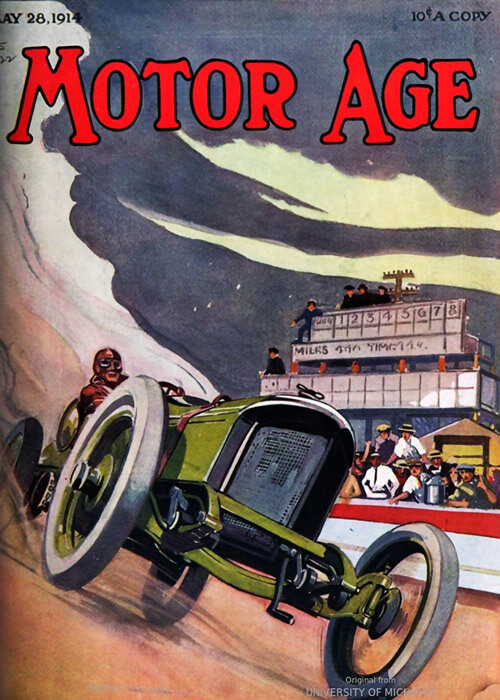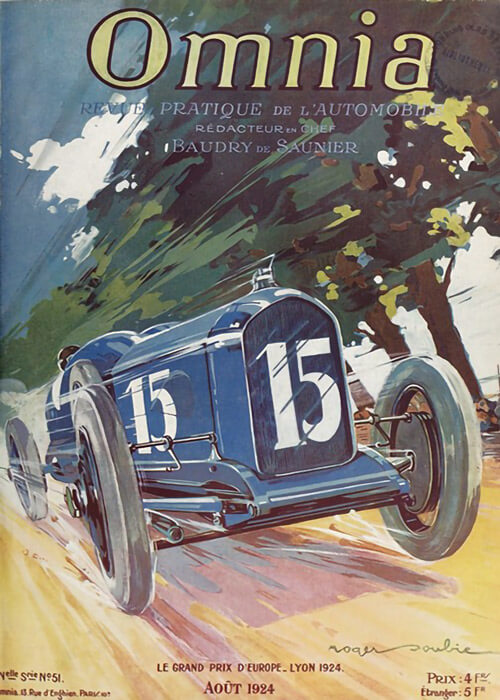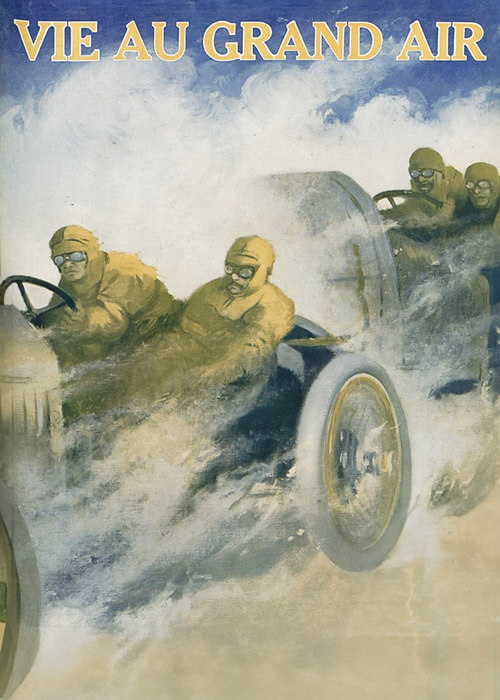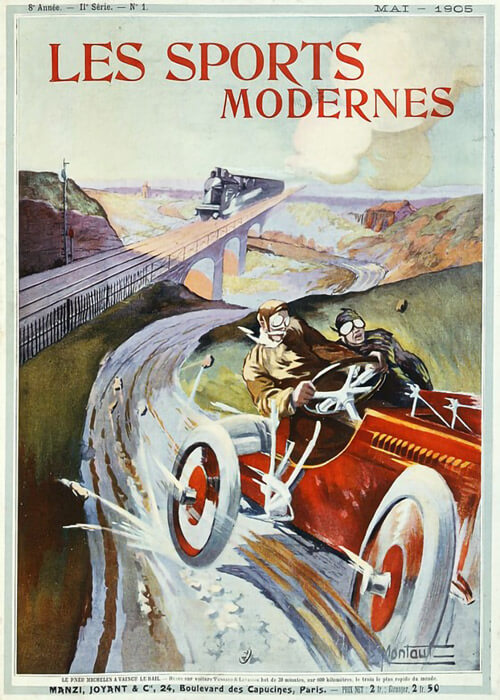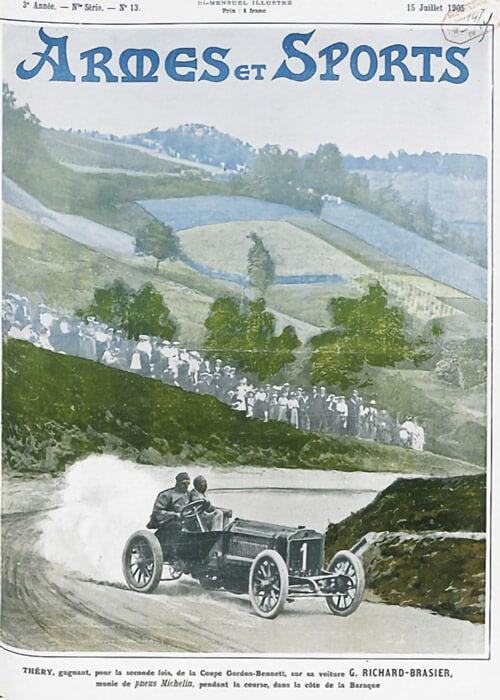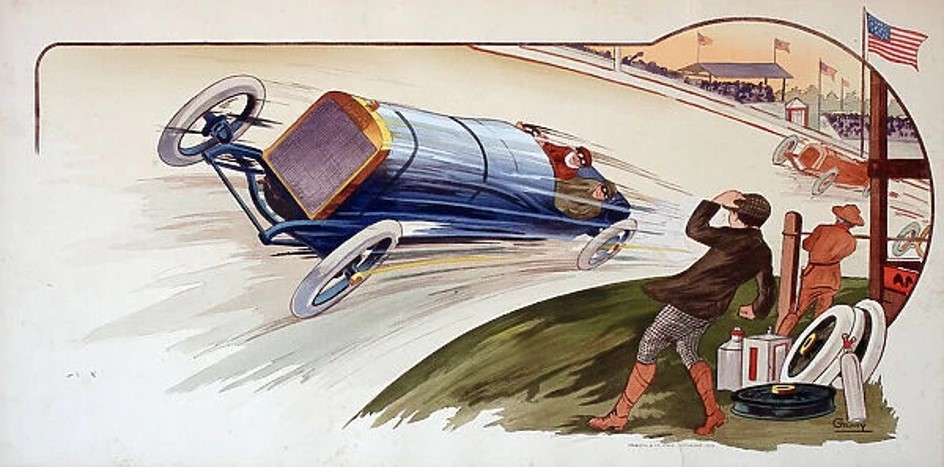Beginning of June 1909, it looks like the construction of the speedway track will not take long before completion. As stated, in short the gravel will be layed, then rolled with steam rollers and finally asphalt oil will be mixed on the surface. Two still famous pictures are shown here: a steam roller on a curve surface and Carl Fisher driving his Stoddard-Dayton over the track.
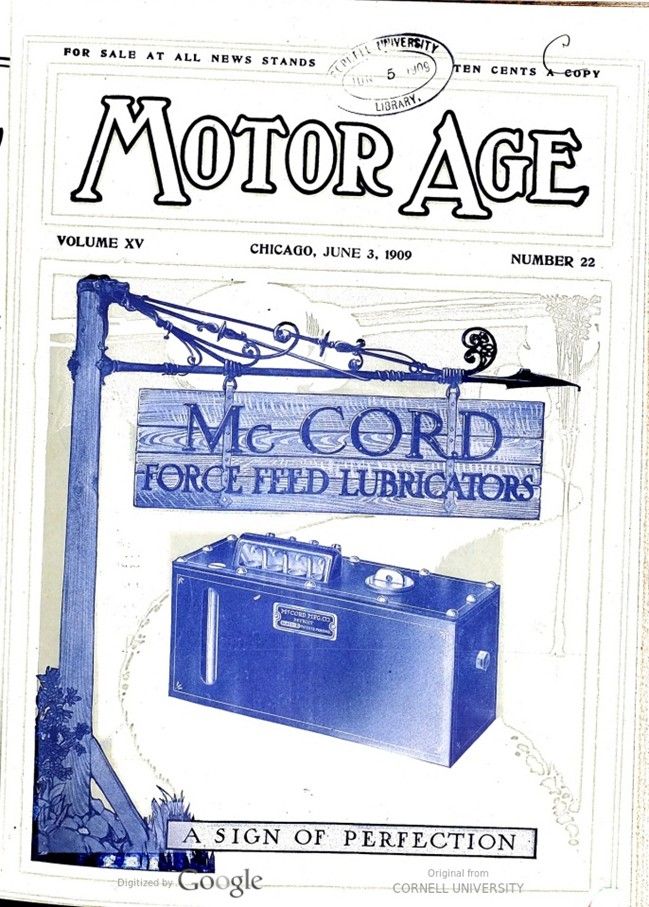
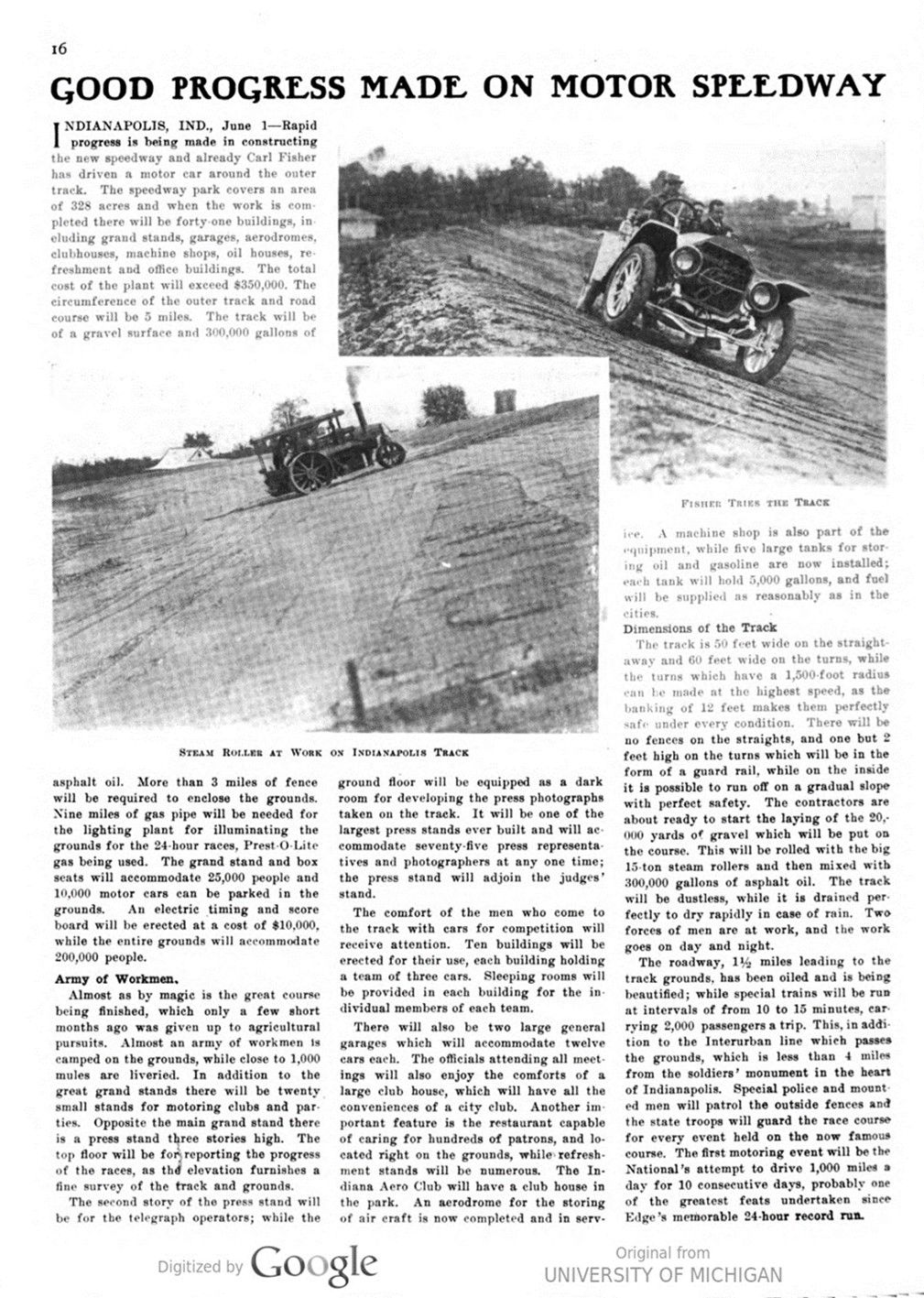
Text and jpegs by courtesy of hathitrust.org www.hathitrust.org, compiled by motorracinghistory.com
Motor Age, Volume XV, No. 22, June 3, 1909.
GOOD PROGRESS MADE ON MOTOR SPEEDWAY
INDIANAPOLIS, IND., June 1 — Rapid progress is being made in constructing the new speedway and already Carl Fisher has driven a motor car around the outer track. The speedway park covers an area of 328 acres and when the work is completed there will be forty-one buildings, in eluding grand stands, garages, aerodromes, clubhouses, machine shops, oil houses, refreshment and office buildings. The total cost of the plant will exceed $350,000. The circumference of the outer track and road course will be 5 miles. The track will be of a gravel surface and 300,000 gallons of asphalt oil. More than 3 miles of fence will be required to enclose the grounds. Nine miles of gas pipe will be needed for the lighting plant for illuminating the grounds for the 24-hour races, Prest-O-Lite gas being used. The grand stand and box seats will accommodate 25,000 people and 10,000 motor cars can be parked in the grounds. An electric timing and score board will be erected at a cost of $10,000, while the entire grounds will accommodate 200,000 people.
Army of Workmen
Almost as by magic is the great course being finished, which only a few short months ago was given up to agricultural pursuits. Almost an army of workmen Is camped on the grounds, while close to 1,000 mules are liveried. In addition to the great grand stands there will be twenty small stands for motoring clubs and parties. Opposite the main grand stand there is a press stand three stories high. The top floor will be for reporting the progress of the races, as the elevation furnishes a fine survey of the track and grounds.
The second story of the press stand will be for the telegraph operators; while the ground floor will be equipped as a dark room for developing the press photographs taken on the track. It will be one of the largest press stands ever built and will accommodate seventy-five press representatives and photographers at any one time; the press stand will adjoin the judges‘ stand.
The comfort of the men who come to the track with cars for competition will receive attention. Ten buildings will be erected for their use, each building holding a team of three cars. Sleeping rooms will be provided in each building for the individual members of each team.
There will also be two large general garages which will accommodate twelve cars each. The officials attending all meetings will also enjoy the comforts of a large club house, which will have all the conveniences of a city club. Another important feature is the restaurant capable of caring for hundreds of patrons, and located right on the grounds, while refreshment stands will be numerous. The Indiana Aero Club will have a club house in the park. An aerodrome for the storing of air craft is now completed and in service. A machine shop is also part of the equipment, while five large tanks for storing oil and gasoline are now installed; each tank will hold 5,000 gallons, and fuel will be supplied as reasonably as in the cities.
Dimensions of the Track
The track is 50 feet wide on the straightaway and 60 feet wide on the turns, while the turns which have a 1,500-foot radius can be made at the highest speed, as the banking of 12 feet makes them perfectly safe under every condition. There will be no fences on the straights, and one but 2 feet high on the turns which will be in the form of a guard rail, while on the inside it is possible to run off on a gradual slope with perfect safety. The contractors are about ready to start the laying of the 20,000 yards of gravel which will be put on the course. This will be rolled with the big 15-ton steam rollers and then mixed with 300,000 gallons of asphalt oil. The track will be dustless, while it is drained perfectly to dry rapidly in case of rain. Two forces of men are at work, and the work goes on day and night.
The roadway, 1½ miles leading to the track grounds, has been oiled and is being beautified; while special trains will be run at intervals of from 10 to 15 minutes, carrying 2,000 passengers a trip. This, in addition to the Interurban line which passes the grounds, which is less than 4 miles from the soldiers‘ monument in the heart of Indianapolis. Special police and mounted men will patrol the outside fences and the state troops will guard the race course for every event held on the now famous course. The first motoring event will be the National’s attempt to drive 1,000 miles a day for 10 consecutive days, probably one of the greatest feats undertaken since Edge’s memorable 24-hour record run.
Photo captions.
STEAM ROLLER AT WORK ON INDIANAPOLIS TRACK – FISHER TRIES THE TRACK
